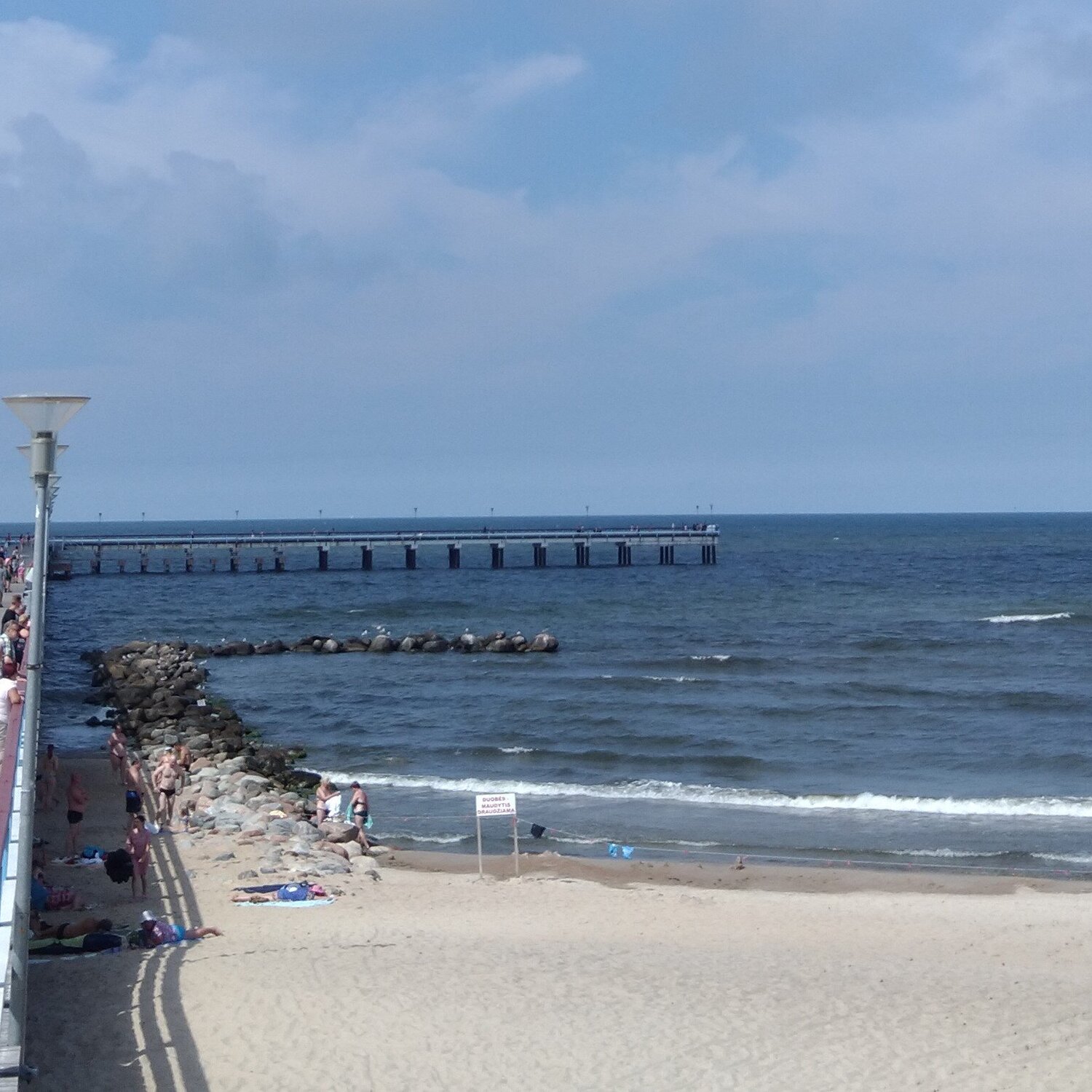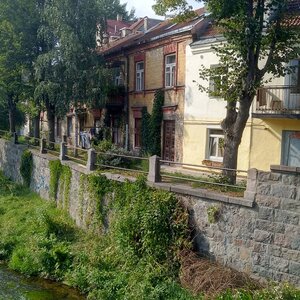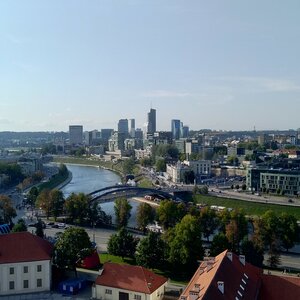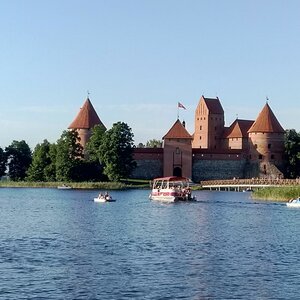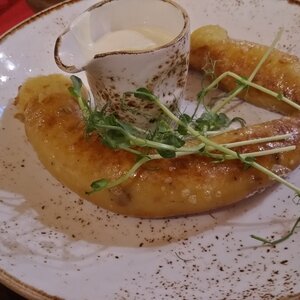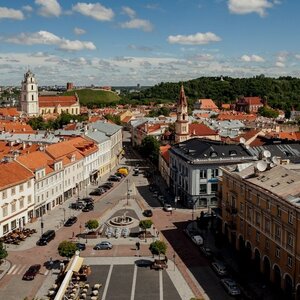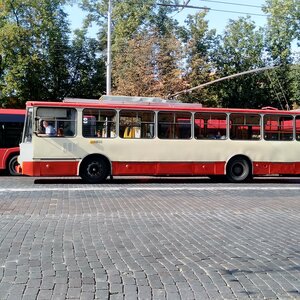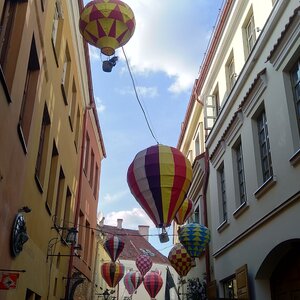The first mention of Palanga dates back to the 12th century. According to one version, «po langą" translated as «up to the windows»: it is said that the inhabitants constantly complained that every night the sand from the dunes covered the houses up to the windows.
Palanga Sights
While Europe was actively converting to Catholicism, Palanga practiced paganism. The inhabitants appealed to a whole pantheon of gods, built temples and sacrificial hills, and guarded the sacred fire. One of the hills became a landmark of Palanga. Lithuania was the last European country to adopt Christianity, which happened only in the 14th century.
Palanga became known as a resort in the 19th century. Before that, all the glory belonged to Klaipeda. The Tyszkiewicz family bought the village and turned it into a health resort. The first hotel, a restaurant, a theater, a promenade and a «bridge to the sea» were built on the count’s money.
Jonas Basanavičiaus street (J. Basanavičiaus gatve)
Baltic resort towns have pedestrianized central streets that lead to the sea. In Jurmala it is Jomas iela and in Palanga it is J. Basanavičiaus gatve, a wide and lively street with cafes, souvenir shops and stalls with legendary smoked Lithuanian fish (labeled Žuvys).
Until 1923, the avenue was called Tyszkiewicz Boulevard. Then it was renamed after Dr. Jonas Basanavičius, a great man for Lithuania. Remaining a doctor, he studied the history of his people, culture and folklore, and published books on the subject.
On Jonas Basanavičius Street I recommend trying Žuvys — smoked fish. It is fresh, caught on the coast and smoked immediately. The kiosk sells mackerel, flounder, eel, bream and perch, catfish and pikeperch. The purchase is given in a plate or in a bag. You can snack on it at one of the benches, and in the evening try something from the national cuisine.
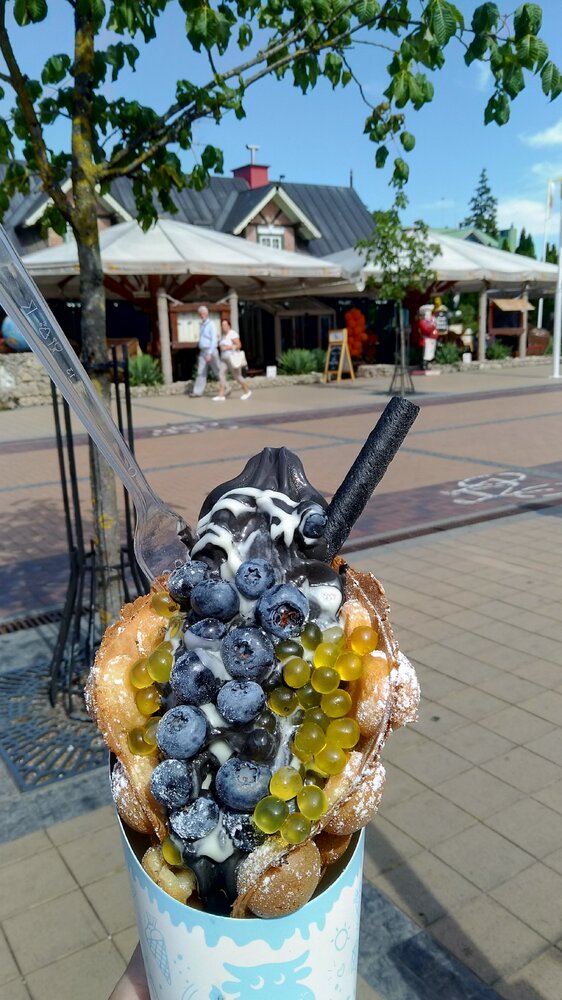
Pier (Palangos tiltas).
Jonas Basanavičius Street passes into a 19th century pier — it was a ship pier. In 1892, the pier was declared unsuitable for ships, abandoned, and it almost collapsed. Only in 1998 it was restored.
It could have been an ordinary pier if it weren’t for the atmosphere. On the shore there are benches that resemble an auditorium. During the day you can watch the sea and seagulls from this angle, in the evening the daily show is the sunset.
The sunset in the sea in Palanga is a free but memorable performance. Places on the benches must be taken in advance. Hundreds of people come to watch as the sun slowly sinks below the horizon and flashes before finally disappearing. At the moment of the flash, the crowd emits a unified «ahhhhh». The lights on the pier then come on.
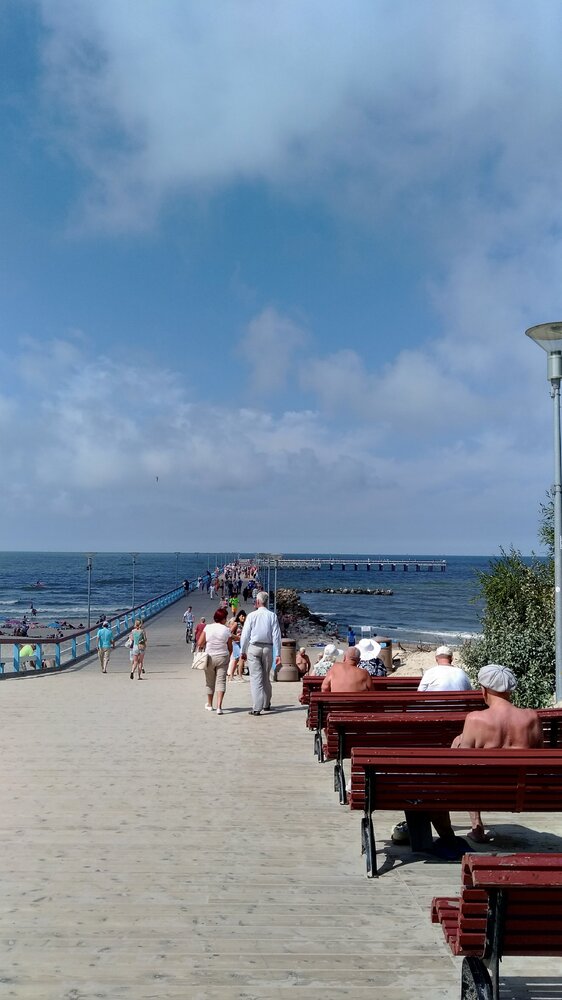
Botanical Park (Palangos miesto botanikos parkas)
For themselves, the Tyszkiewicz family ordered the construction of a luxurious manor house and garden, for which they invited the chief gardener of Paris, Edouard François-André.
The park is small — only 1.5 km along the coast, but it is beautiful, well-maintained and quiet. The park is decorated with openwork bridges, statues, fountains, a lake, swans, benches, a rose garden and more than 200 rare plants, 24 of which are listed in the Red Book.
I recommend visiting the park in summer, when Palanga is hot, the beach is crowded, but the park even in the middle of the day is pleasant and very quiet, there is something to see and somewhere to walk.
- Opening hours: 8:00—12:00, 13:00—17:00
- Admission is free, but no bicycles allowed
- Website
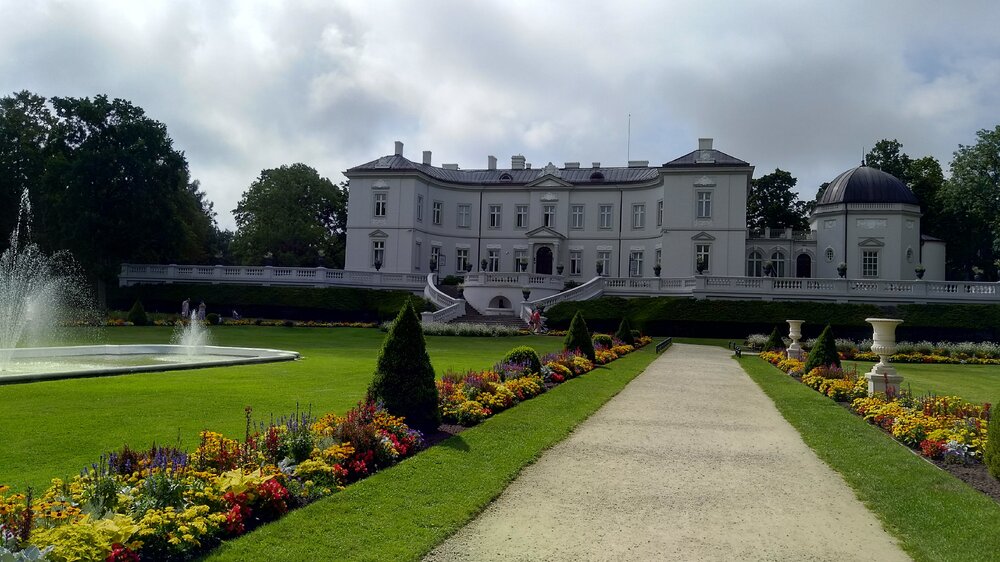
Birutė Hill (Birutės Kalnas)
The highest point in the park is Birute Hill. The hill was named in honor of a cult figure in Lithuania — the wife of Prince Keistut, the mother of Grand Duke Vitovt. In paganism she was elevated to the rank of saint and made the patroness of lovers. Lithuanian history has many legends dedicated to Biruta.
In X–XIII centuries it was a sacred hill with sacrificial fire, later — a pagan sanctuary and observatory. Now there is a chapel at the top, a grotto at the foot and a monument to Biruta, a symbol of fidelity. The hill overlooks the park and the sea.
Amber Museum (Gintaro muziejus)
There is an amber museum in the park in the former Tyszkiewicz residence. Large nuggets, small stones with frozen inhabitants inside — what other stone is there to which entire museums are dedicated?
The first floor is dedicated to the life of the Tyszkiewiczs, and the second floor to the «gold of the Baltics». The history of the stone of 40 thousand years is shown by 28,000 specimens. Among them there is a giant amber weighing 3.5 kg.
- Opening hours: Tues.-Fri. from 10:00 to 17:00, Sat. and Sun. from 11:00 to 17:00, Monday off
- Cost: adult ticket 4 €, child ticket 2 €
- Website
Church of the Ascension of the Blessed Virgin Mary (Palangos Švč. Mergelės Marijos Ėmimo į dangų bažnyčia)
The Tyszkiewicz family developed Palanga in every possible way. In 1897—1907 they built the Church of the Virgin Mary in neo-Gothic style. This style is widespread in Lithuania. For example, in Vilnius, St. Anna’s Church, one of the main attractions of the city, is built in this style.
Inside there are stained colored glass windows, an organ and a carved marble altar. Here you can listen to organ music or singing.
Not many people know yet, but in 2018, the temple opened a viewing platform. In the left wing there is a staircase that leads to the top, and at the top there is a viewing platform with stationary binoculars. Here you can get a free bird’s eye view of Palanga.
- Working hours: Fri.-Sat. 9:00—17:30, Sunday 13:30—17:30
- Admission: free of charge
- Website
How to get from Vilnius to Palanga
I prefer to hitchhike from Vilnius to Palanga and back — it’s about 340 km on a straight highway. But this method is not suitable for everyone. You have to communicate a lot with drivers, understand where to stop to catch a car. Alternative options include buses, trains, renting a car and traveling with fellow travelers.
Bus Vilnius — Palanga
It is a fast and inexpensive transportation to Palanga.
- Carriers: Toks Neo, Infobus, Vlasava
- Departure station: main bus station Autobusų stotis.
- There are 11 departures every day. First flight at 6:00, last flight at 23:00 (1—2 flights per hour).
- Travel time: 4, 5 hours on average.
- Cost: from 19,95 €.
- Arrival station: ul. Klaipėdos pl. 42.
The cost of a ticket online is a few euros cheaper than at a bus station ticket office. You can choose a convenient flight and buy tickets on the international ticketing websites Autobus. Travel and Busfor.
The buses are almost the same. To avoid boredom on the road, you can choose a flight from Toks: they have wi-fi, video and audio entertainment, the ticket is 3.5 € more expensive.
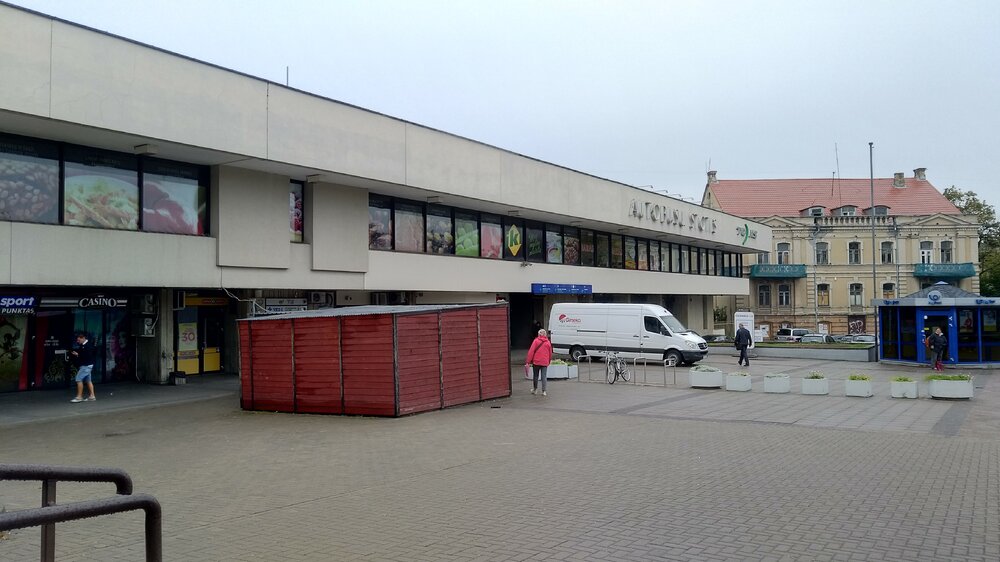
Train Vilnius — Palanga
In Vilnius, directly opposite the bus station at Geležinkelio g. 16 is the railway station. From here 3—5 times a day trains run to Klaipeda, from which Palanga can be reached by bus. When traveling through Klaipeda, be sure to stop in this most German city of Lithuania: What to see in Klaipeda.
Trains can carry luggage up to 35 kg, even pets are allowed. Timetables and prices vary depending on the season and can be found on the website.
In Klaipeda next to the railway station there is a bus station where transportation to Palanga leaves from. The bus runs every 30 minutes from 9:00 to 22:00. The ticket costs about 1,5—2 €. You can buy it in advance on the website of Lithuanian buses or on the international sites Autobus. Travel and Busfor in Russian. Travel time is 30 minutes.
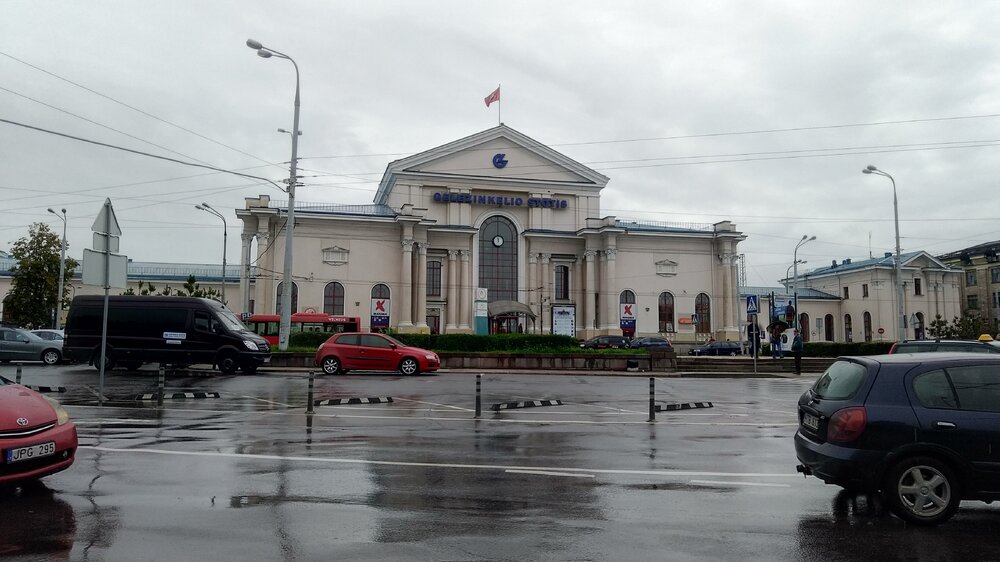
By car
Non-residents of Latvia have two options to get to Palanga by car: rent a car or find a traveling companion.
- You can hitchhike or use Blablacar to find a traveling companion. It may be cheaper than a bus or train, but it is difficult to plan such a trip in advance: drivers publish offers 1—2 days in advance.
- You can use international rental aggregators to rent a car: Rentalcars, Auto Europe, Economybookings, DiscoverCars
Although Palanga is a seaside resort, it is not for lying down. There is never a dull moment here, there are enough attractions, and in summer you can catch festivals and national holidays with pagan flavor — a very colorful spectacle.
Palanga city website

